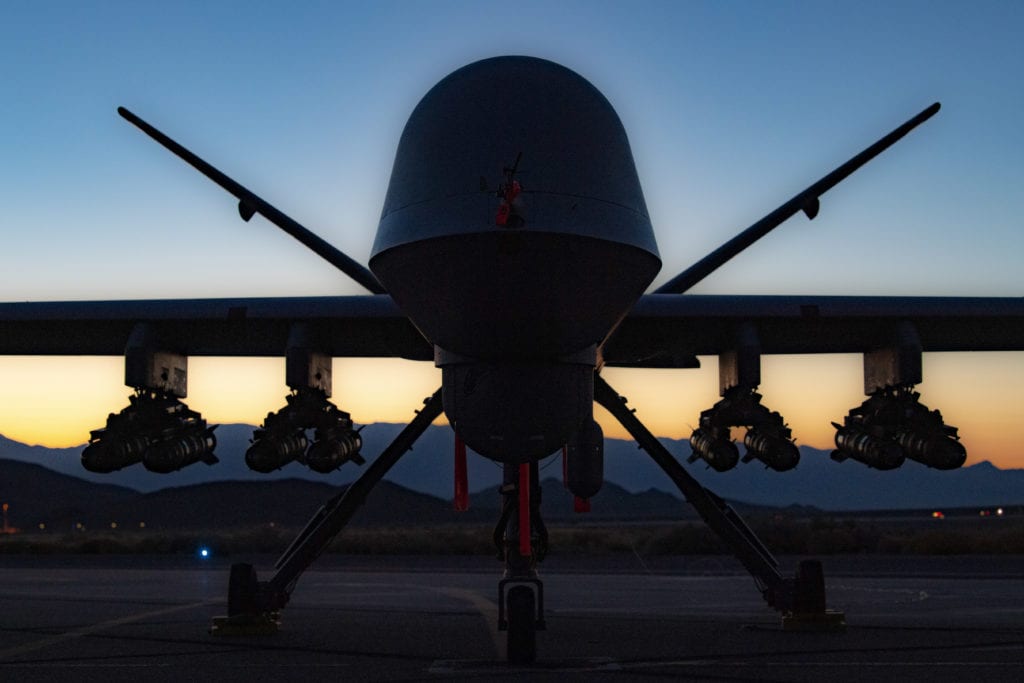
ARLINGTON, Va.—The Marine Corps plans to procure a total of 18 MQ-9A extended range Reaper unmanned aerial vehicles to operate in support of distributed maritime operations and expeditionary base operations, particularly in the Indo-Pacific region.
The Corps currently operates two MQ-9As in the U.S. Central Command area of responsibility. The two are operated by a Marine UAV squadron (VMU).
“We will procure 16 more for a total of 18,” said Lt. Gen. Eric M. Smith, commanding general, Marine Corps Combat Development Command, testifying March 18 before the Seapower and Projection Forces Subcommittee of the House Armed Services Committee. “That’s three [VMU] squadrons of six [each].”
The Reapers — built by General Atomics Aeronautical Systems — being procured have the Block 5-20 upgrades, which will be updated because of the open architecture of the system and will be able “to keep pace with or outpace the threat,” Smith said, who noted that the Reapers have on board “systems that give both inflight protection and protection from tampering.”
Smith said the Reapers could operate from a variety of locations, including the continental United States, Hawaii, Guam, or a partner nation.
The MQ-9A is incredibly important to us to pass data across the battlefield, the closer of the maritime kill chain as we operate underneath an alternate precision navigation and timing network,” Smith said. “That system has the duration and the range to be operated from those bases that we do control and still give us the loiter time that we need to both close the kill chain and to move that asset around something as vast as the Indo-Pacific theater.”
Earlier, the Corps garnered extensive experience with the Reaper by using ISR (intelligence, surveillance and reconnaissance) services provided by General Atomics in support of Marine forces in Southwest Asia.
- SECNAV Advocates Increased Legal Immigration to Increase Shipbuilder Workforce - April 23, 2024
- Insitu Going Strong at 30, Focusing on Maritime Operations - April 8, 2024
- Navy Awards Boeing Additional Funds for MQ-25 Drones for Testing - April 3, 2024






